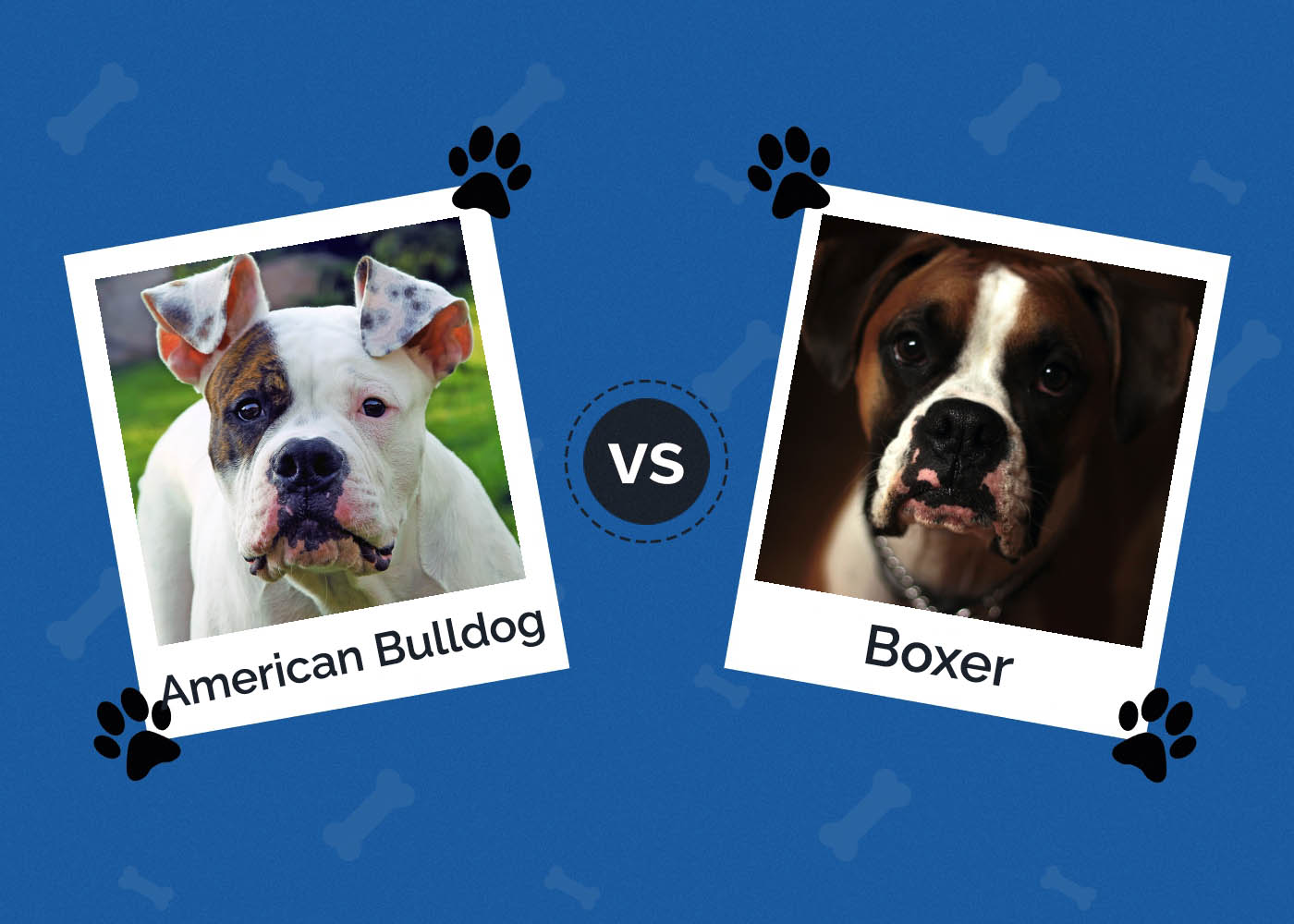German Shepherd vs Labrador: Which Breed is Right for You?

Updated on
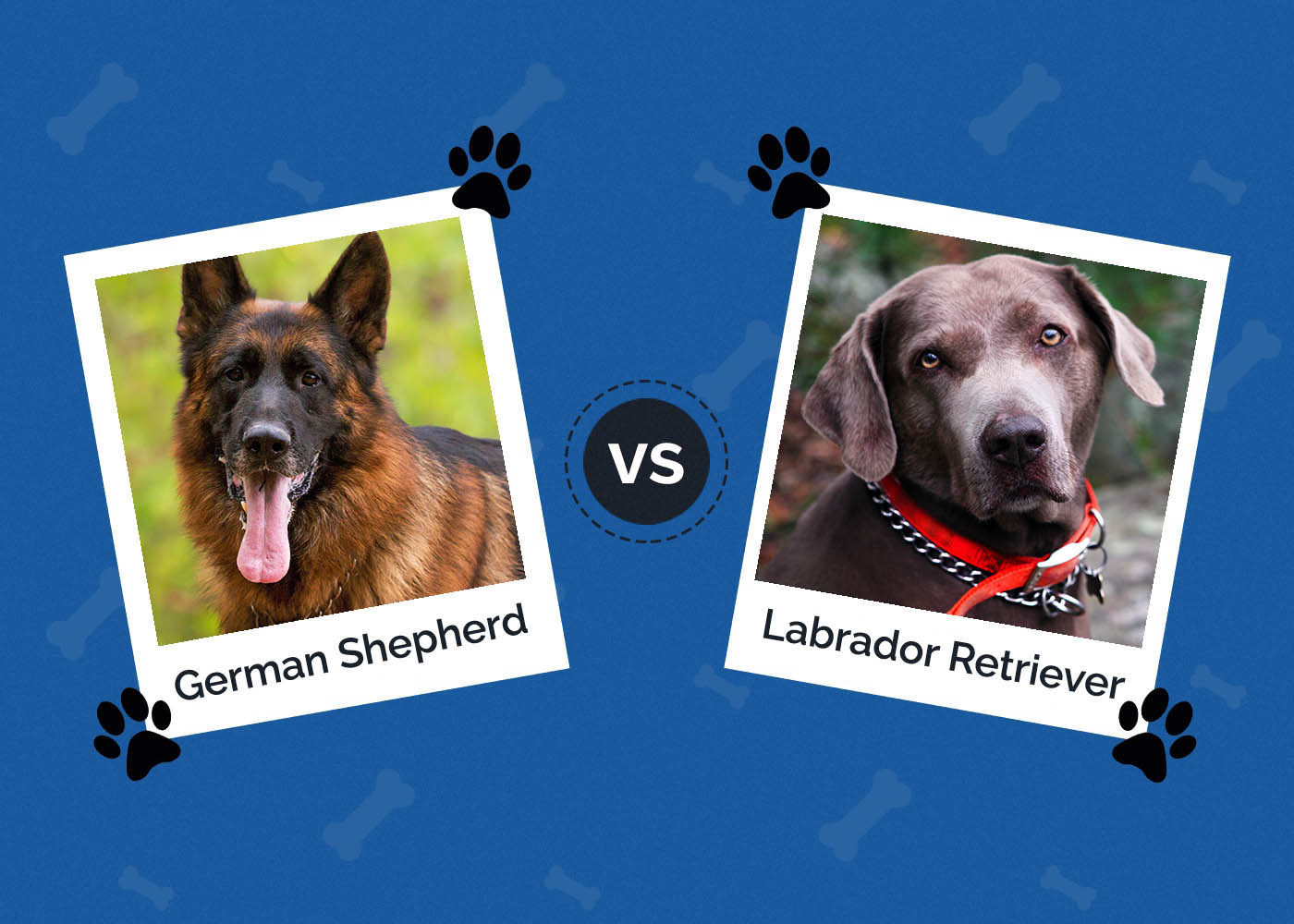
The gorgeous German Shepherd and lovely Labrador lie in the top two slots of the AKC list of popularity. These two are radically different from one another, from personality traits to physical appearance. While it isn’t any trouble telling them apart, you may need a close comparison to decide which is the one for you.
They were each bred for completely unalike reasons. The German Shepherd was a guard dog and herder while the Labrador assisted hunters in retrieving their kills. Their sharp keenness and unwavering loyalty have transformed them from outdoor workers to the indoor family members we know and love today.
Visual Differences
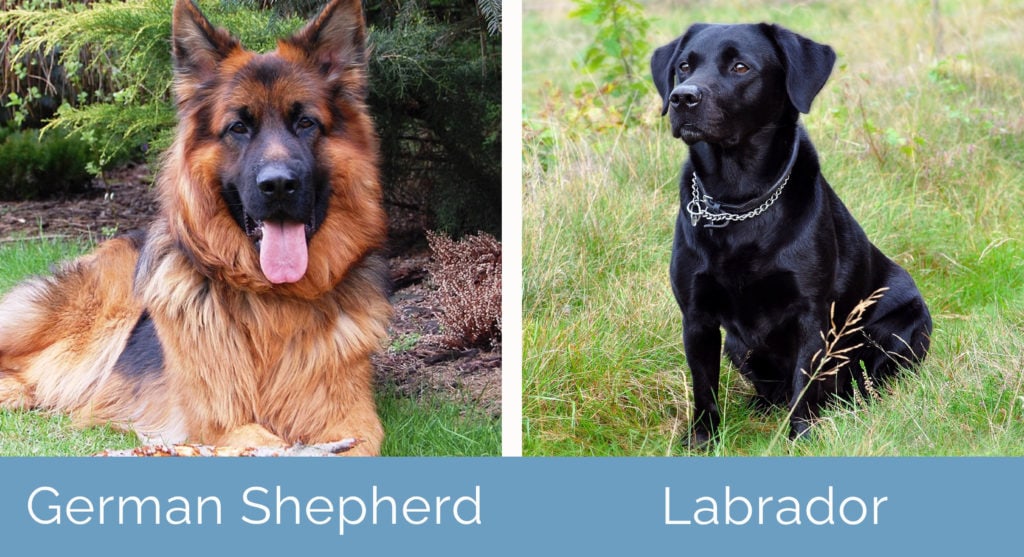
A Quick Overview
As you can see, both the Shepherd and Labrador have their set of unique characteristics. Let’s break it down.
- Average Height (adult): 21–26 inches
- Average Weight (adult): 75–95 pounds
- Lifespan: 10–14 years
- Exercise: 2+ hours/day
- Grooming needs: High (weekly)
- Family-friendly: Yes
- Dog-friendly: Often
- Trainability: Excellent, highly intelligent
- Average Height (adult): 22–25 inches
- Average Weight (adult): 57–79 pounds
- Lifespan: 10–12 years
- Exercise: 40+ minutes/day
- Grooming needs: Moderate
- Family-friendly: Yes
- Dog-friendly: Yes
- Trainability: Excellent, highly intelligent
Physical Attributes
As far as looks are concerned, these two breeds differ tremendously in overall characteristics. While this is true, they both share sporty builds, excellent for agility and precision. Therefore, when it comes to working duties, you can find them training for very similar job roles.
German Shepherd

Close descendants of the wolf, German Shepherds are a large breed originally used for guarding and herding purposes. They have a sleek, well-proportioned frame with sizeable, erect ears and a sharply defined snout. They can come across as very intimidating due to their serious demeanor and great mass.
They have a lifespan of 10–12 years and weigh between 75 and 95 pounds. They can get much bigger in some cases, depending on their bloodlines. They have medium to long coarse coats. Their colors vary between black, black and tan, black and red, blue, and gray. The tail is thick and luxuriant, curving in a downward position.
Labrador

Labradors are medium-sized, resilient dogs who are part of the sporting group category. They have a muscular frame, broad chest, and a wide muzzle. They have sweet expressions and kind eyes. Their short, dense coats are water-resistant. They come in colors of yellow, chocolate, and black. They have what is classically referred to as an “otter tail,” which helps them swim with high accuracy.
They have a lifespan of 10–12 years and weigh between 55 and 79 pounds when fully grown. This breed can be particularly prone to obesity and overeating, so it is best to portion rations appropriately to keep them lean.
Temperament
When it comes to personality, these two dogs differ considerably in this arena as well. Labs are often seen as outgoing and friendly, whereas Shepherds can come across as standoffish and somber. Both are loving and steadfast with their families.
German Shepherd
German Shepherds are sharp-minded and alert. They take their duties as the defender of the household very seriously. They will be protective of young children, and they will guard their humans with their lives. They are very animated, requiring both mentally and physically stimulating exercise. Because of keen intelligence, they will get bored if there is no entertainment. They will be eager to go for a jog or run with you anytime you please.
They can be very carefree and good-humored. They are not the kind of dog who will fare well being tied up or locked in a confined area regularly. They need space to explore so they can have an outlet for their energy. Otherwise, they may exhibit destructive behaviors.
They are skeptical and wary of strangers, so you must show them that it is acceptable to have guests. Taking them for public walks or to other events while they are young is a great way to help them. Any aggressive tendencies must be dealt with appropriately with obedience training.
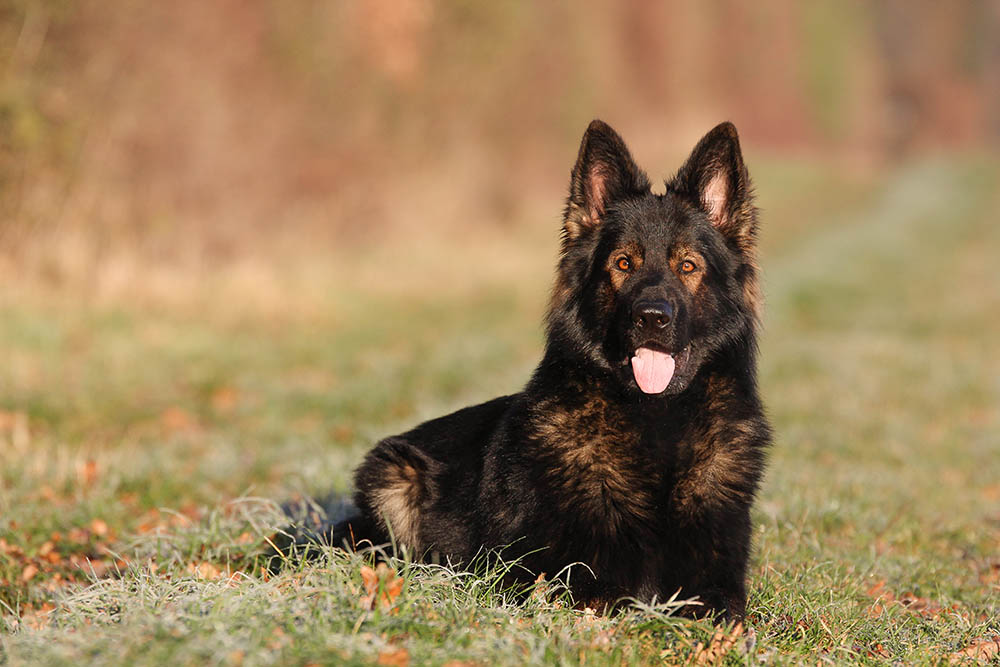
Labrador
Labradors are infamously friendly and sociable. They are welcoming to strangers and get along with other dogs and children. This doesn’t mean they will let anyone get hurt, as they are protective if needed. However, they are generally very trusting and passive. They love to be active. They will happily accompany owners on hiking trips, swimming sessions, and quick jogs. Your little ones can have a pal willing to play, whether it be fetch, frisbee, or other yard games. They will gladly tag along on vacations and outings.
Because they are sporting dogs, they may be slightly prey-driven. You can correct this early on with proper training to prevent bullying smaller animals, especially if you have cats.
Their friendliness may not serve them so well when it comes to acting as a guard dog. While they can alarm you if they sense impending trouble, they may be too trusting and less likely to attack when warranted.
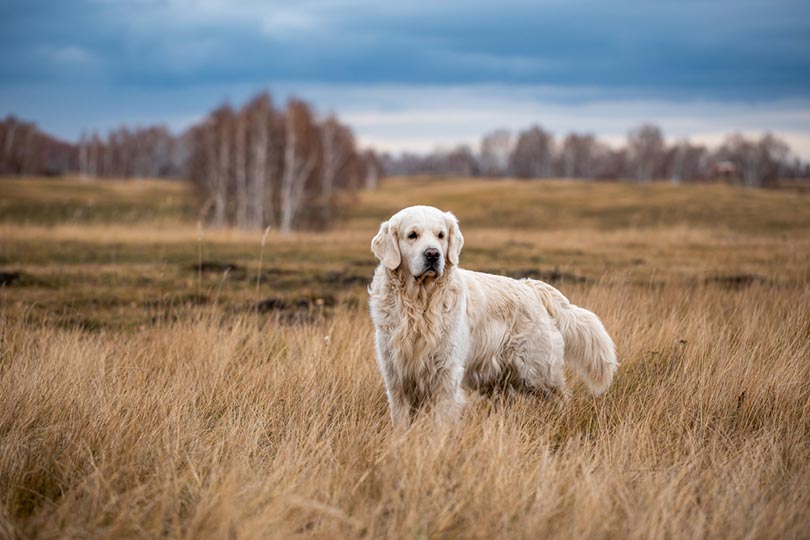
Health Issues
Purebred dogs are often prone to certain health conditions. These can be mild or severe. With proper vetting, you can stay on top of the problems to keep your pet as healthy and pain-free as possible.
German Shepherd
Hip dysplasia is the top concern for German Shepherds. While many large breeds are at risk, it is especially common for this breed. Unfortunately, some breeders will know a dog has this problem but still use them to reproduce anyway. It is essential to be aware of genetic conditions before getting your puppy.
They may also be prone to idiopathic epilepsy, which is a genetic disorder where the dog develops seizure activity with no known cause between 1–4 years of age. You can control the condition with medications, but there is no cure.
Shepherds can also have diabetes, bloat, and degenerative disc disease.

Labrador
Labradors are hardy dogs with few health concerns. While they are generally problem-free, they do still suffer certain conditions occasionally. They have issues such as hip dysplasia, which can affect many large breeds. They also have other joint troubles such as patellar luxation, a problem with a dislocating knee, and osteochondritis dissecans.
Labradors also suffer from canine lymphoma, which is a cancer of the lymph nodes. They may also develop heart disease or recurring ear infections.
Cost
Today, we can save so many animals through shelters and rescues. You can select purebreds of any variation by adopting through these centers. They are much more affordable, paying between $50–$300, and you can give a loving animal a second chance.
If you opt for a puppy, you will want to steer clear of puppy mills or backyard breeders.
German Shepherd
Pricing for German Shepherds in the US ranges from $500–$1,500. This price tag can change depending on the authenticity and location of the breeder. They should have vet care and proper socialization. A proven track record and a history of healthy litters are a must.
Purchasing a Shepherd as a service dog will depend on the extent of training and the duty they were assigned. You can pay anywhere in the vast ballpark of $5,000–$65,000.

Labrador
Pricing for a Labrador in the US ranges from $800-$1,200. This can vary depending on the area you live and the breeder you select. Each one will have their own rates based on vetting costs and profit requirements. Be sure your puppy is healthy. Make sure there is paperwork to guarantee they have adequately vetted the litter, including first shots, health screening, and deworming.
If you need a professionally trained pet, you may pay much more. Labs as service dogs can cost upwards of $25,000. They can be less or more depending on training specifics.
Which Breed is Best for You?
While both breeds offer so much, one of them has probably caught your eye. Remember, if you want a more gregarious dog who’s accepting of strangers and other animals right off the bat, a Lab will be the right selection. Shepherds must feel out the person or situation to know whether they are tolerant of it.
You will need to be very consistent when training Shepherds to assert dominance. Getting the ranks mixed up can cause them to misbehave. Labs are more eager to please, so they will be more manageable in that regard.
Now that you have the research under your belt, it’s time to find a trustworthy breeder or local shelter where you can find your new best friend.
See also:
- Labrador vs. Pitbull: Which One Should You Choose?
- Male vs Female German Shepherds: What’s the Difference (With Pictures)
Featured Image Credit: (L) Osetrik, Shutterstock | (R) Casler Bixby, Shutterstock





